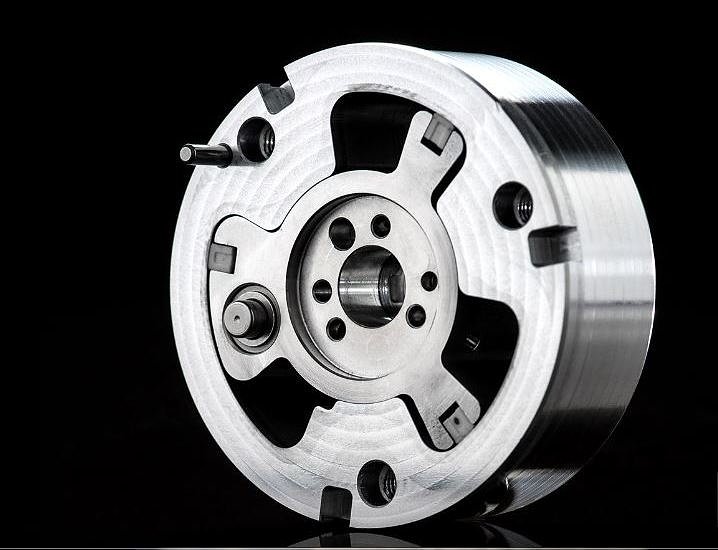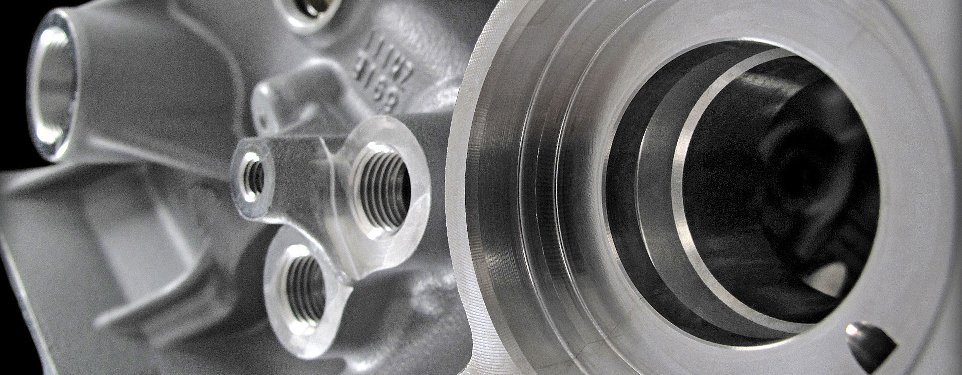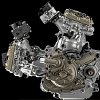Ducati has spent the past few decades trying to convince us that the metal springs every other motorcycle manufacturer uses to open and close the intake and exhaust valves on their engines are as antiquated as buggy whips and gas lanterns. Now, they've upped the ante on valve train exclusivity.
As promised a few days ago, Ducati has unveiled details of its new DVT engine, and the acronym stands for Desmodromic Variable Timing. The Testastretta DVT is a 1,198cc twin that will likely debut in the new Multistrada and will make Ducati the first to bring this level of variable valve timing to motorcycle engines.
This video by Ducati on YouTube shows off some of the parts involved in putting the V in the DVT engine and explains the reasoning behind it.
In brief, if you chose to skip the video, the advantage of variable valve timing is that it eliminates the first compromise engineers have to make in designing a small-displacement, high-revving engine: Do they choose valve overlap (the time both exhaust and intake valves are open) that is best for high-rpm performance or that is best for smooth, low-rpm power? If you're designing a heavyweight cruiser or a race-replica sportbike, that compromise is not hard to make. If you're building something like a Multistrada, which is expected to offer high performance and good manners, in a wide range of usage, it's an unwelcome compromise.
How does it work? Here's Ducati's explanation: "A valve timing adjuster [is] fitted to the end of each of the two camshafts per cylinder head. The DVT system consists of an external housing, rigidly connected to the cam belt pulley, and an internal mechanism which is connected to the camshaft and can independently rotate inside the housing. This rotation of the internal mechanism, either in advance or in delay with respect to the housing, is precisely controlled by varying the oil pressure in special chambers of the mechanism. The oil pressure is adjusted by dedicated valves and the timing of each cam is dynamically controlled by a sensor located in the cam covers."
I'm hoping the video above and the photo below will help you envision how this works.

What's the advantage? Ducati says the DVT engine produces 160 horsepower, so that would be about 10 more than the non-DVT Testastretta engine in the current Multistrada, and also gets 8 percent better gas mileage. Ducati also makes reference to emissions, and we can presume that variable timing will also have some benefits in meeting emissions requirements around the world.
DVT ≇ VTEC
DVT is not the same as the other variable valve actuation scheme tried in motorcycles. Honda's VTEC, used beginning in 2002 in the VFR800, switched between two valves per cylinder at low engine speeds and four valves per cylinder above a set rpm. That allowed Honda to vary the overlap by using different cam profiles for the valves that worked all the time than for the ones that only worked at high rpm. But the system was not the same as Ducati's DVT.
The VFR's VTEC system was never popular because it was essentially two settings, and if you were heeled over in a curve at 6,800 rpm when the engine switched, the changed power could upset the bike. In theory, this should not be an issue with the DVT engine, because the timing adjustment is infinitely variable within its range, not a light switch that's off or on.
The other complaint about VTEC was the cost of valve adjustments, which rose with the added complexity. Some shops charged for seven hours of labor for the valve adjustment. Will valve adjustment costs also be insane on the DVT engine? I might be able to give you an informed answer, if I had followed my high school physics teacher's advice and studied engineering in college. But since I majored in journalism, I'll have to resort to semi-informed speculation and wait for Lemmy to jump in and correct me if I'm blatantly wrong. I suspect the system in the DVT engine will not complicate valve adjustments as much as the VTEC setup did.
Ducati didn't address the complexity of valve adjustments, but did say that the adjustment interval is unaffected by the addition of variable valve timing, and is 30,000 kilometers (about 18,640 miles). Manufacturers often specify different intervals in different markets, so we'll have to see what the actual recommendation is for new, U.S. Multistradas when they come out.

So, will variable valve timing be the next greatest thing in motorcycles, or will it lead to future buyers seeking a lightly used 2014 Multistrada instead of a new 2015 to avoid unwanted complexity that doesn't add anything positive? Will it be the equivalent of finely calibrated, switchable, ABS that only the crustiest curmudgeons don't love, or will it be VFR800 VTEC, BMW's experiment with power-assist brakes on a motorcycle, or Windows 8? We'll have to see, once we find out if it works seamlessly, offers a measurable improvement in performance, is reliable, and doesn't make the first valve adjustment more expensive than a black-market kidney.







